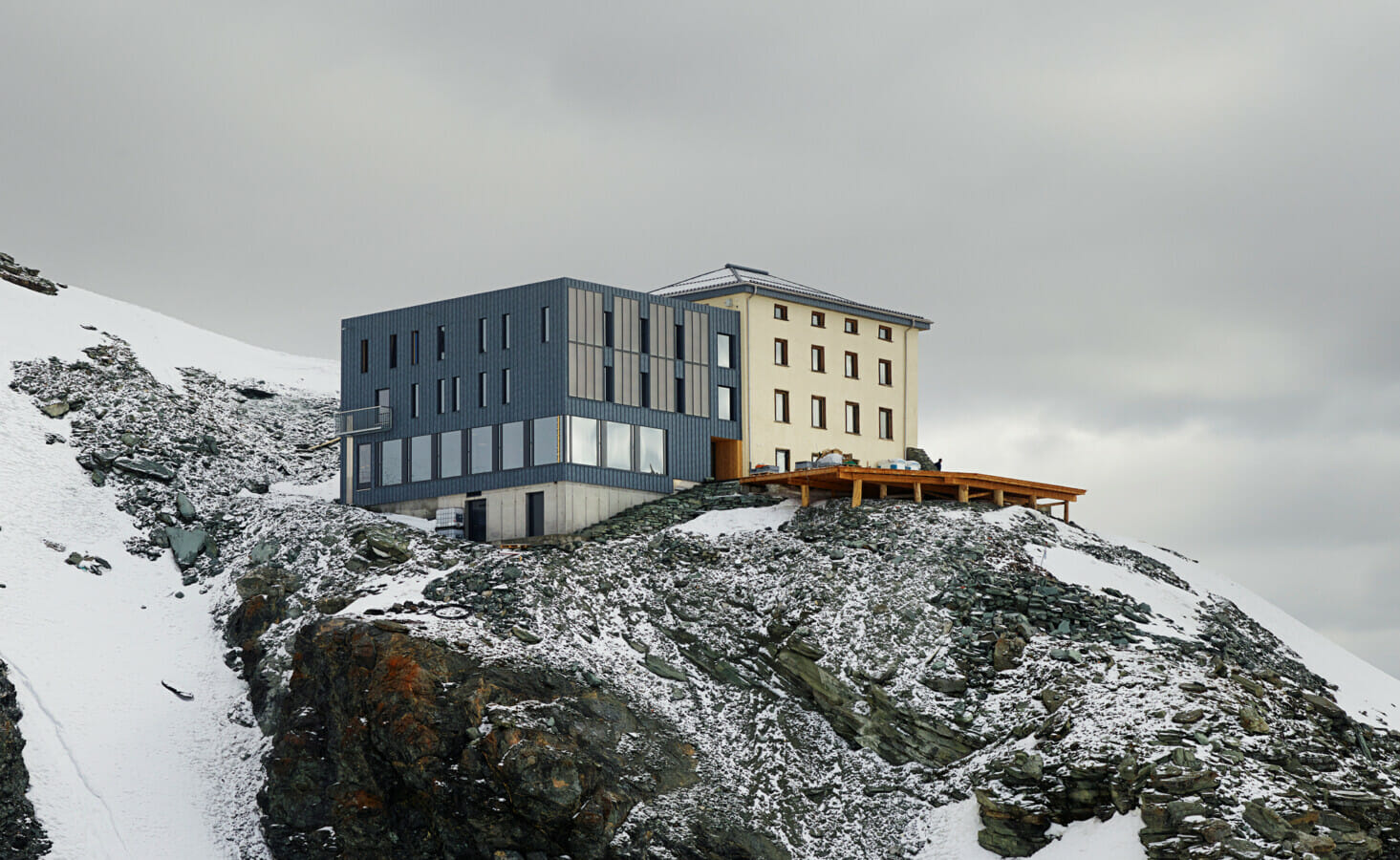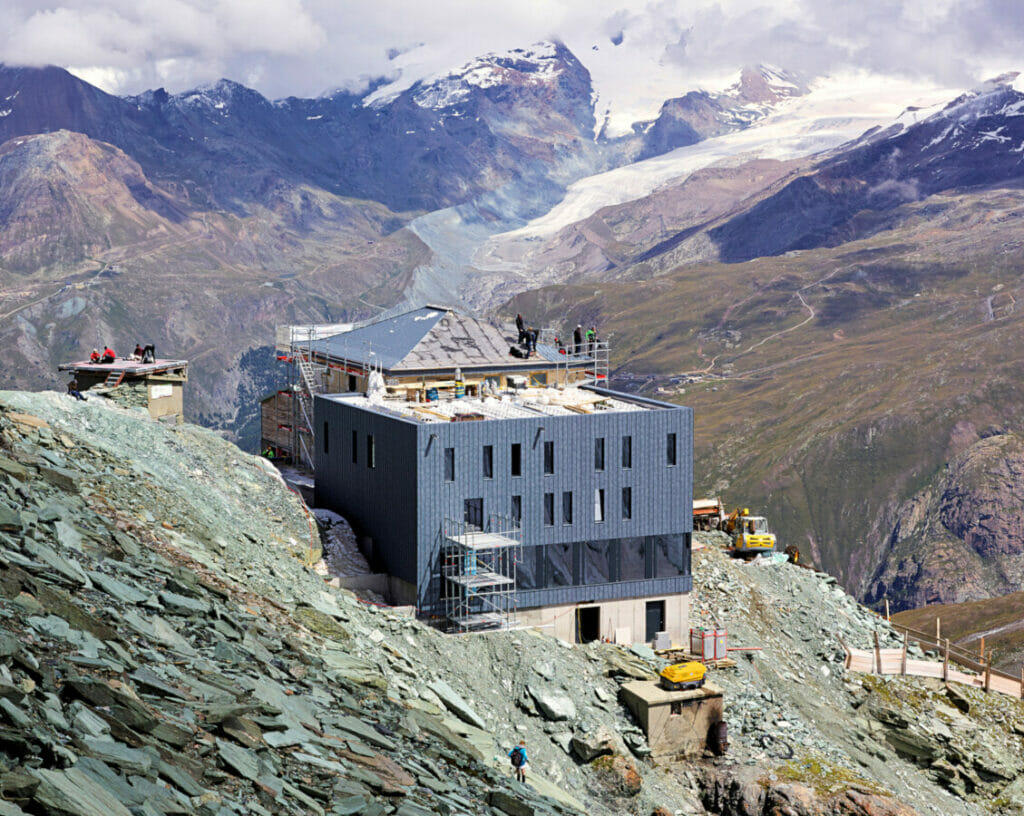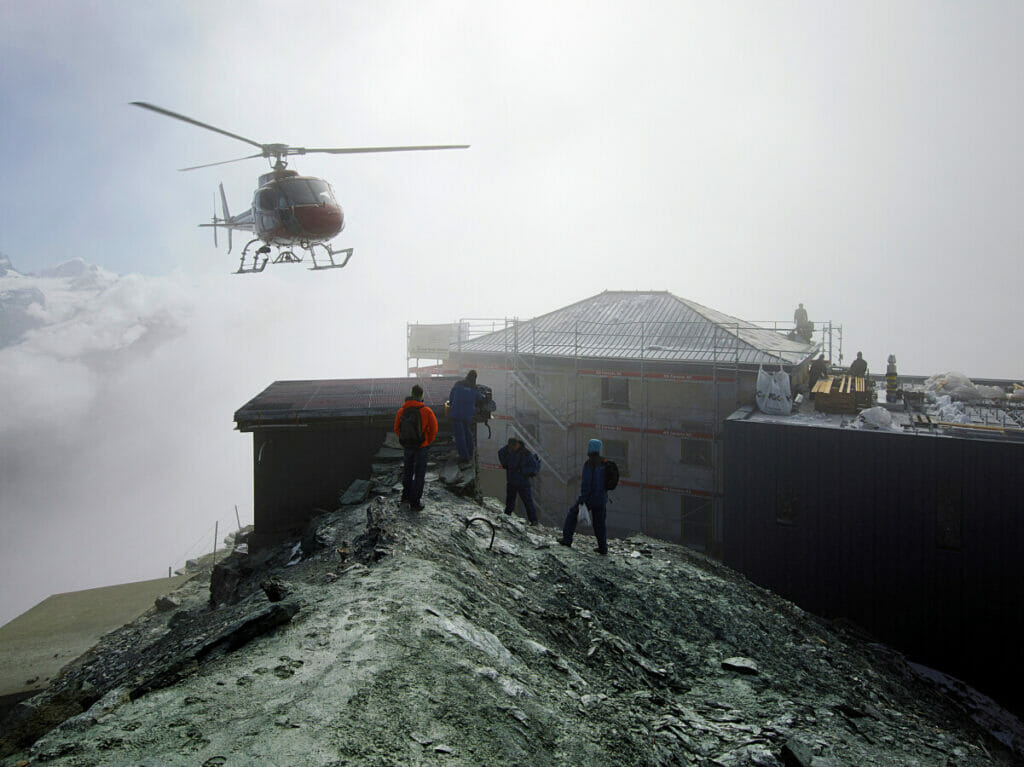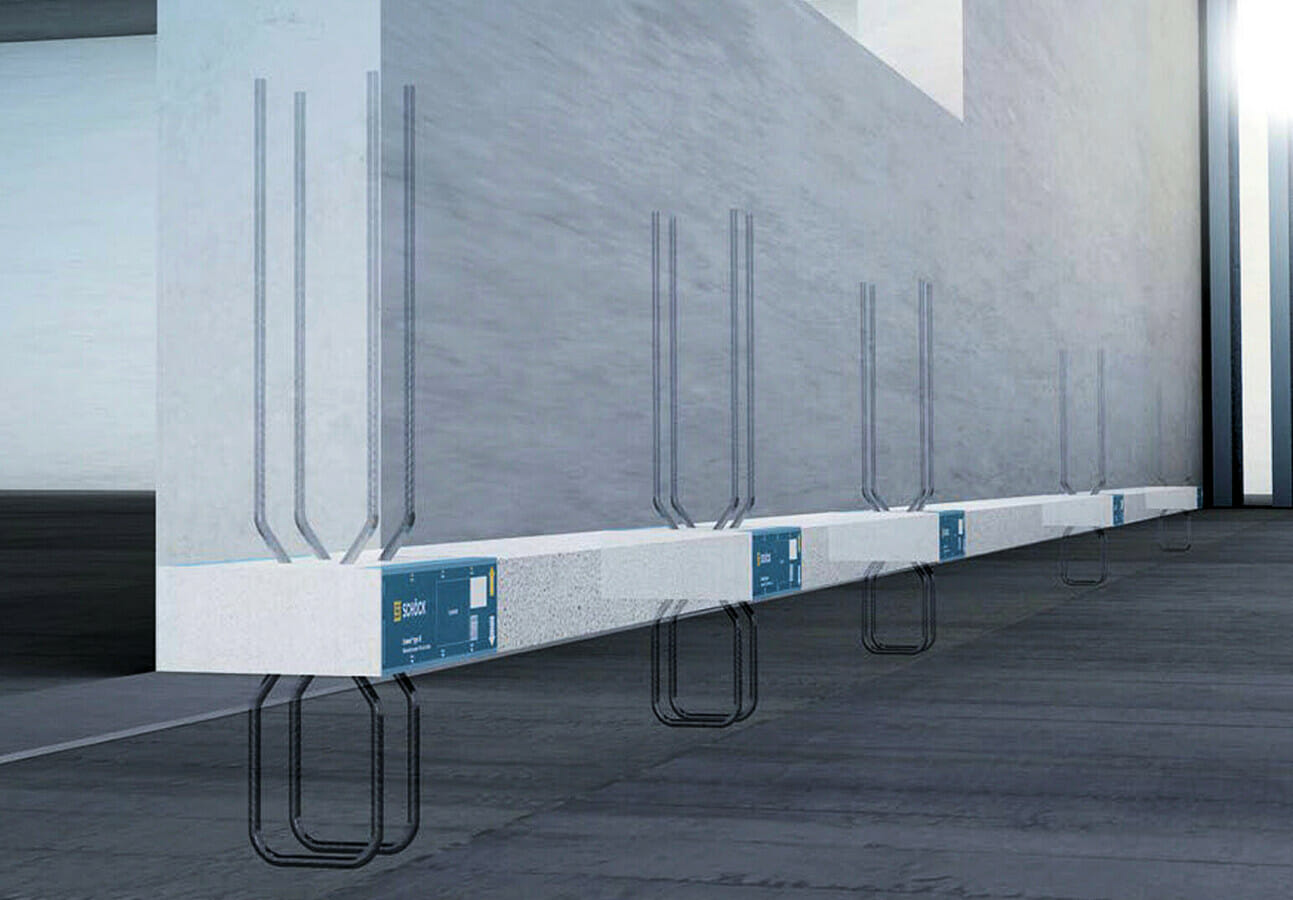
Minimising linear thermal bridges at the wall connection to the floor, or floor slab, has been a long-standing problem with reinforced concrete construction. Around 40% of all thermal bridges in a building are caused by walls and supports, which in turn are responsible for about 10% of heating energy losses However, Schöck has now introduced a dedicated new solution – the Sconnex type W. It is a product that offers outstanding insulation performance, even at 10,000 feet on one of the most iconic mountains in the Alps.
Scaling the Italian-Swiss border at almost 15,000 feet, the Matterhorn is both one of the most recognisable of the Alpine peaks and one of the most challenging. For mountaineers, the favoured access route is along the Hörnli Ridge, a few kilometres to the south-west of Zermatt in Switzerland. Which is why, near the foot of the ridge at just over 10,000 feet, the Hörnlihütte (Hörnli Lodge) was first built there as a base camp in 1880, followed by the Hotel Belvédère in 1909. The two were merged in 1987 and although the buildings have been subject to a number of changes since their original construction, by far the most ambitious and challenging project is the recent demolition of the Hörnli Lodge, replaced by a completely new state-of-the art structure, incorporating the Belvedere.


The High Alps is a harsh working environment
Since the Hörnli Lodge is not connected to public utilities, natural resources like solar energy and the water supply are crucial. The sloping roof is now equipped with solar panels and a natural meltwater pond nearby provides the water source, which is pumped to an underground storage tank before purification. On the ground floor of the lodge a 130-seat dining room provides a 180° panoramic view and untreated spruce wood dominates the interior, helping to provide a sense of warmth and well-being. The buildings with their latest energy-saving and environmental technologies may be a comfortable refuge for climbers and other guests, but it was not that comfortable for those involved in the design and construction of the project. The working environment in the High Alps is a harsh one. The ground is extremely steep, there are very narrow site conditions and keeping to a tight schedule for the outside work was crucial, given the limitations imposed by seasonal Alpine weather conditions. In addition, the only access to site is by means of a narrow, steep path and the construction teams and all materials – including the concrete for the base slab and walls for the basement – had to be flown in using helicopters. Two helicopters commuted constantly between the site and the concrete plant to fly in the required 17 cubic metres of concrete and pour it from the air. Each carrying around a cubic metre of concrete each flight.


Minimising any heat transference was critical
As the building was constructed on a poured in-situ concrete slab, a particularly critical area was the importance of minimising any heat transference between the buildings and the slab. With reinforced concrete construction, linear thermal bridges at the wall connection to the floor, or floor slab, have always been a major problem for the building industry. Schöck, the market leaders in the development of structural thermal breaks for balconies and other cantilever constructions, has now innovatively applied its Isokorb expertise to reinforced concrete wall and support. The result is the Sconnex type W, an application-friendly, dedicated solution that contributes to a permanently sustainable building concept.
For further information on the new Sconnex type W product contact Schöck on 01865 290 890; or download the brochure at www.schoeck.com
